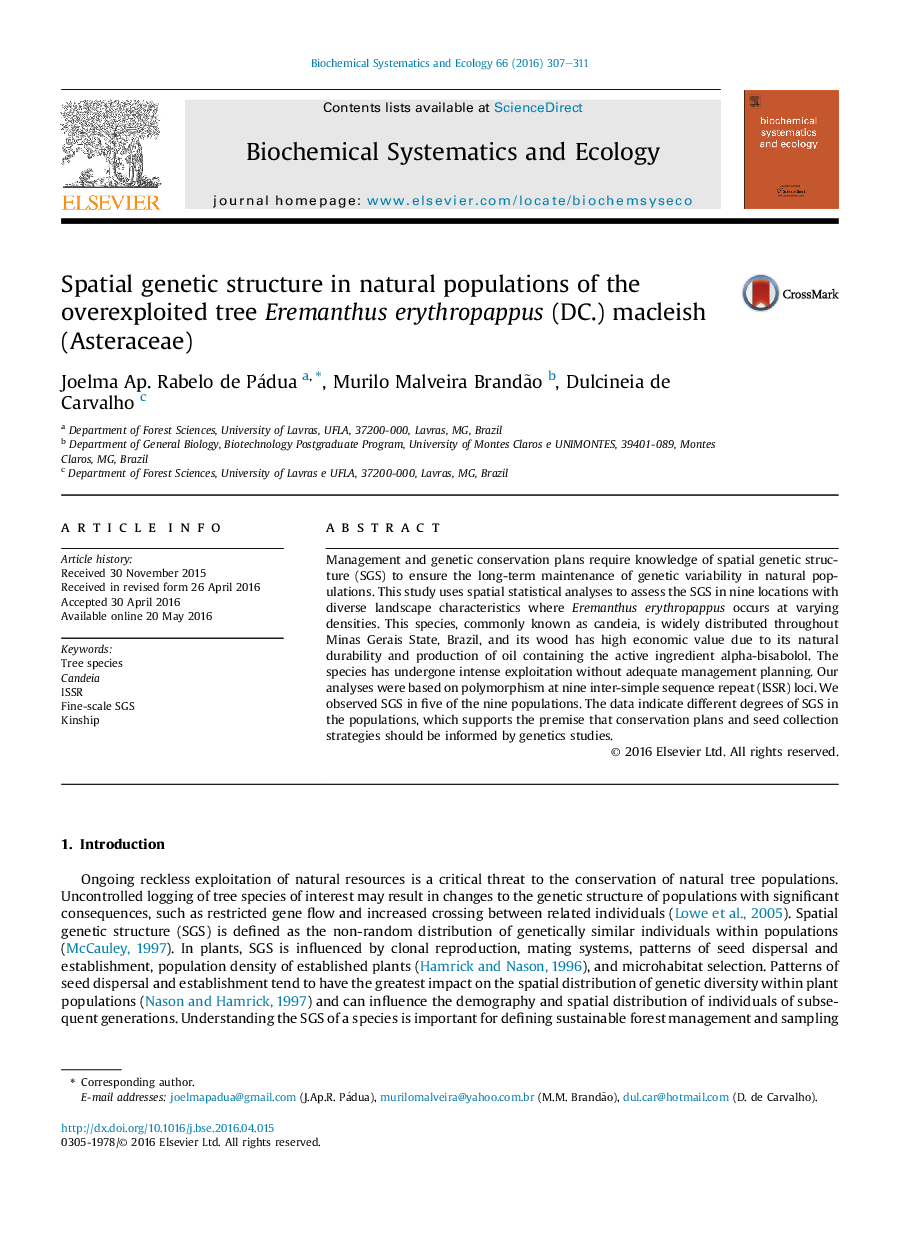| Article ID | Journal | Published Year | Pages | File Type |
|---|---|---|---|---|
| 1353772 | Biochemical Systematics and Ecology | 2016 | 5 Pages |
•E. erythropappus has undergone intense exploitation without management planning.•SGS patterns were different across the study sites.•Results show the presence of genetic structuring at short distances.•Additional studies are conducted to analyze ecological and environmental features.
Management and genetic conservation plans require knowledge of spatial genetic structure (SGS) to ensure the long-term maintenance of genetic variability in natural populations. This study uses spatial statistical analyses to assess the SGS in nine locations with diverse landscape characteristics where Eremanthus erythropappus occurs at varying densities. This species, commonly known as candeia, is widely distributed throughout Minas Gerais State, Brazil, and its wood has high economic value due to its natural durability and production of oil containing the active ingredient alpha-bisabolol. The species has undergone intense exploitation without adequate management planning. Our analyses were based on polymorphism at nine inter-simple sequence repeat (ISSR) loci. We observed SGS in five of the nine populations. The data indicate different degrees of SGS in the populations, which supports the premise that conservation plans and seed collection strategies should be informed by genetics studies.
